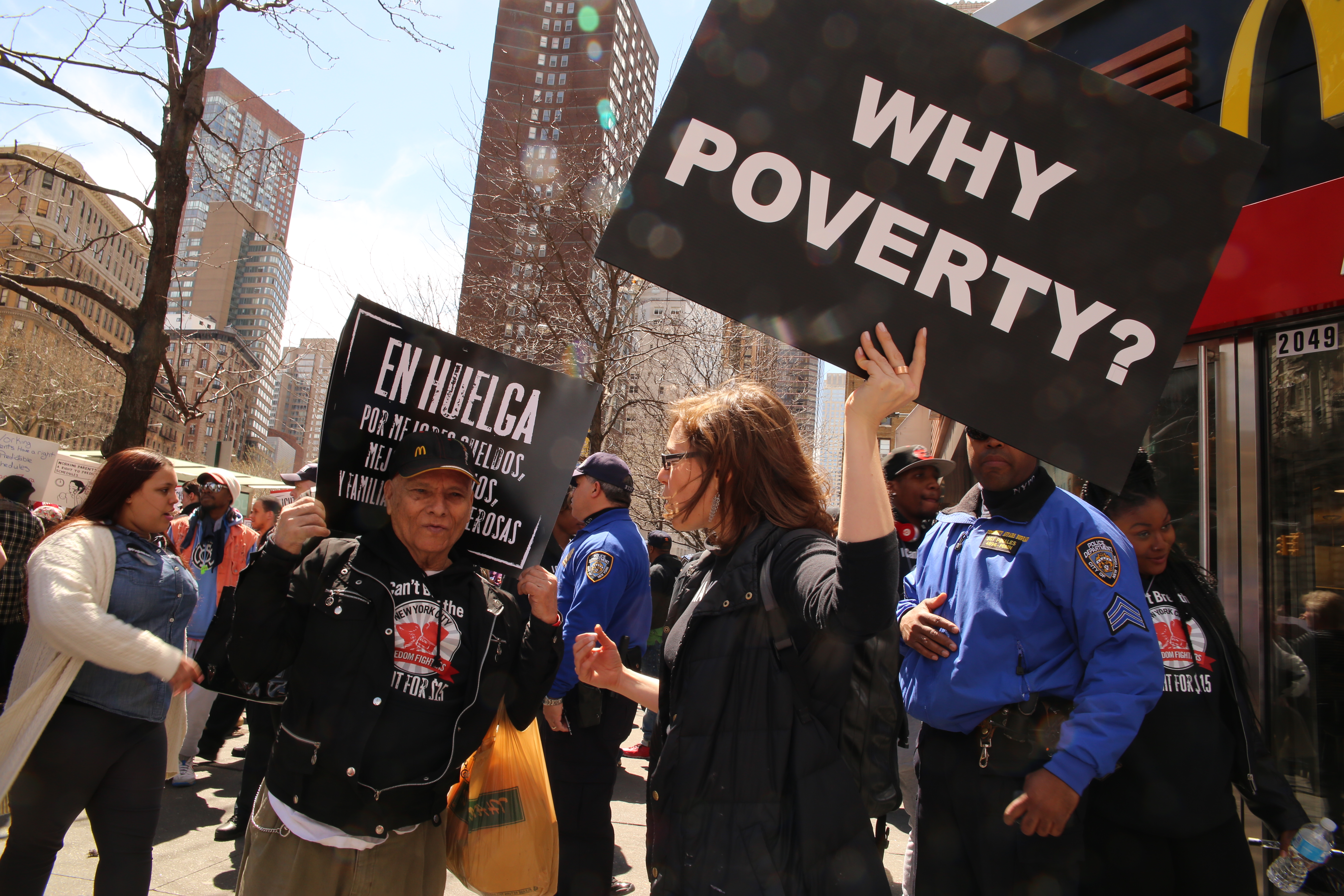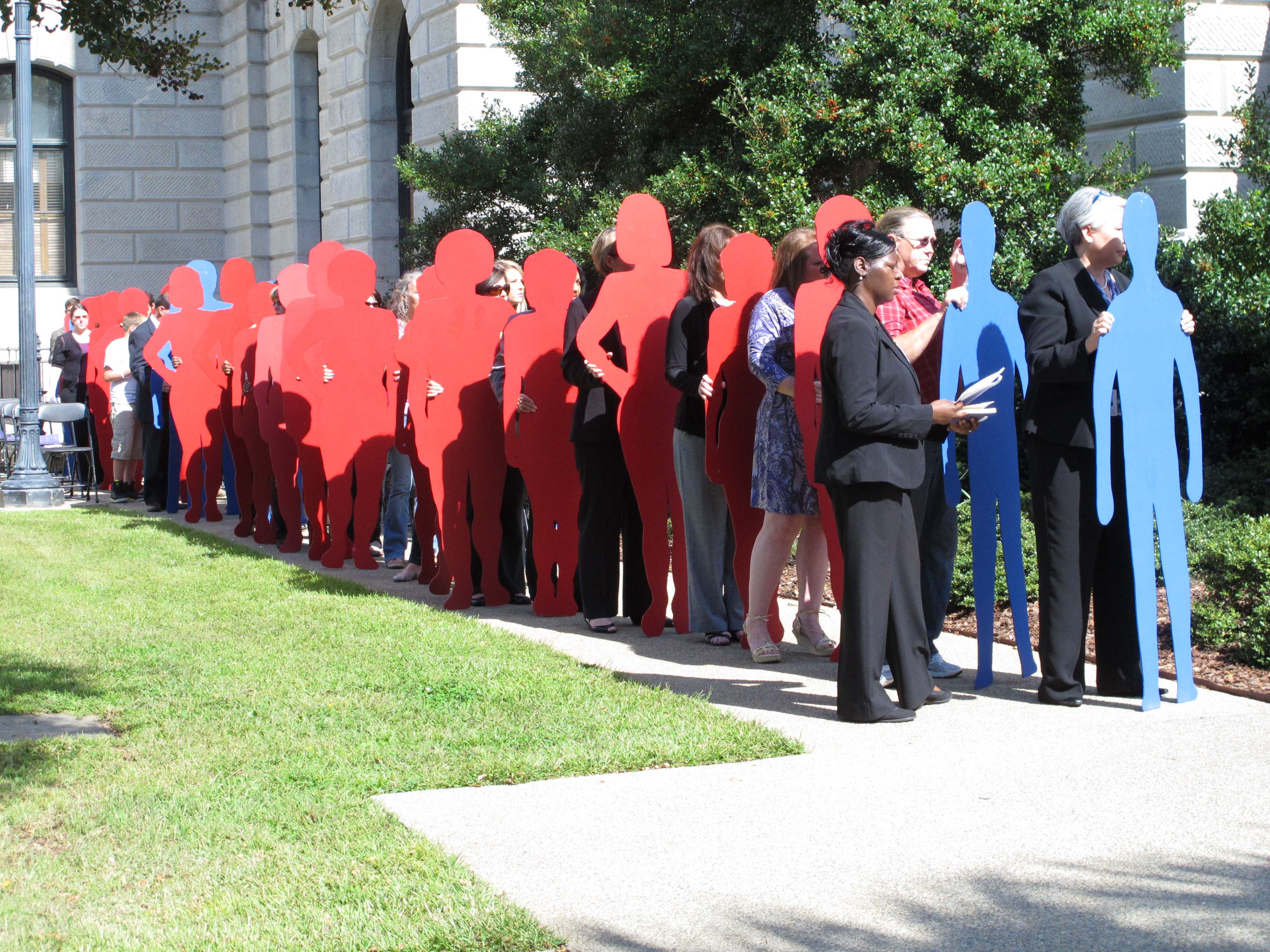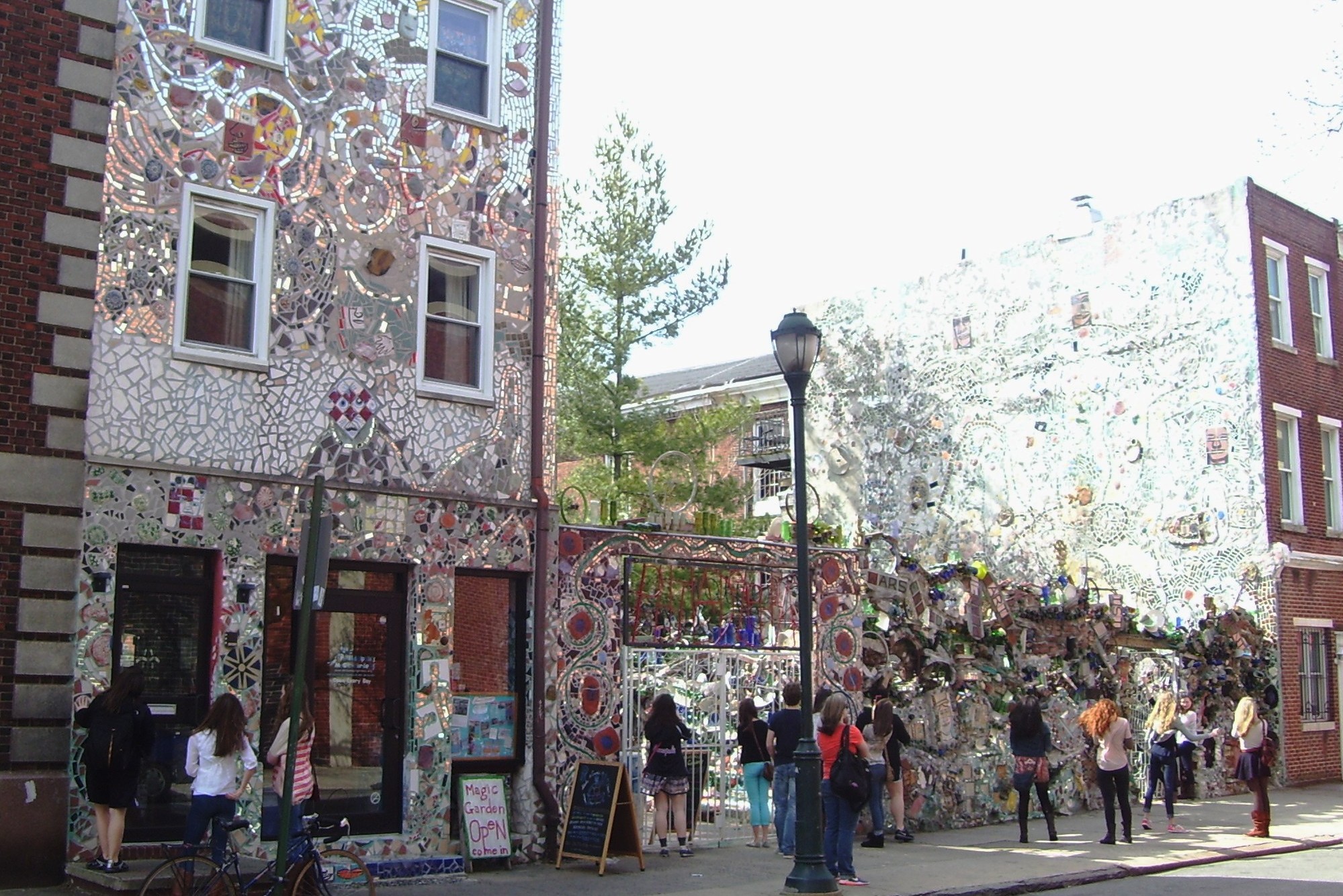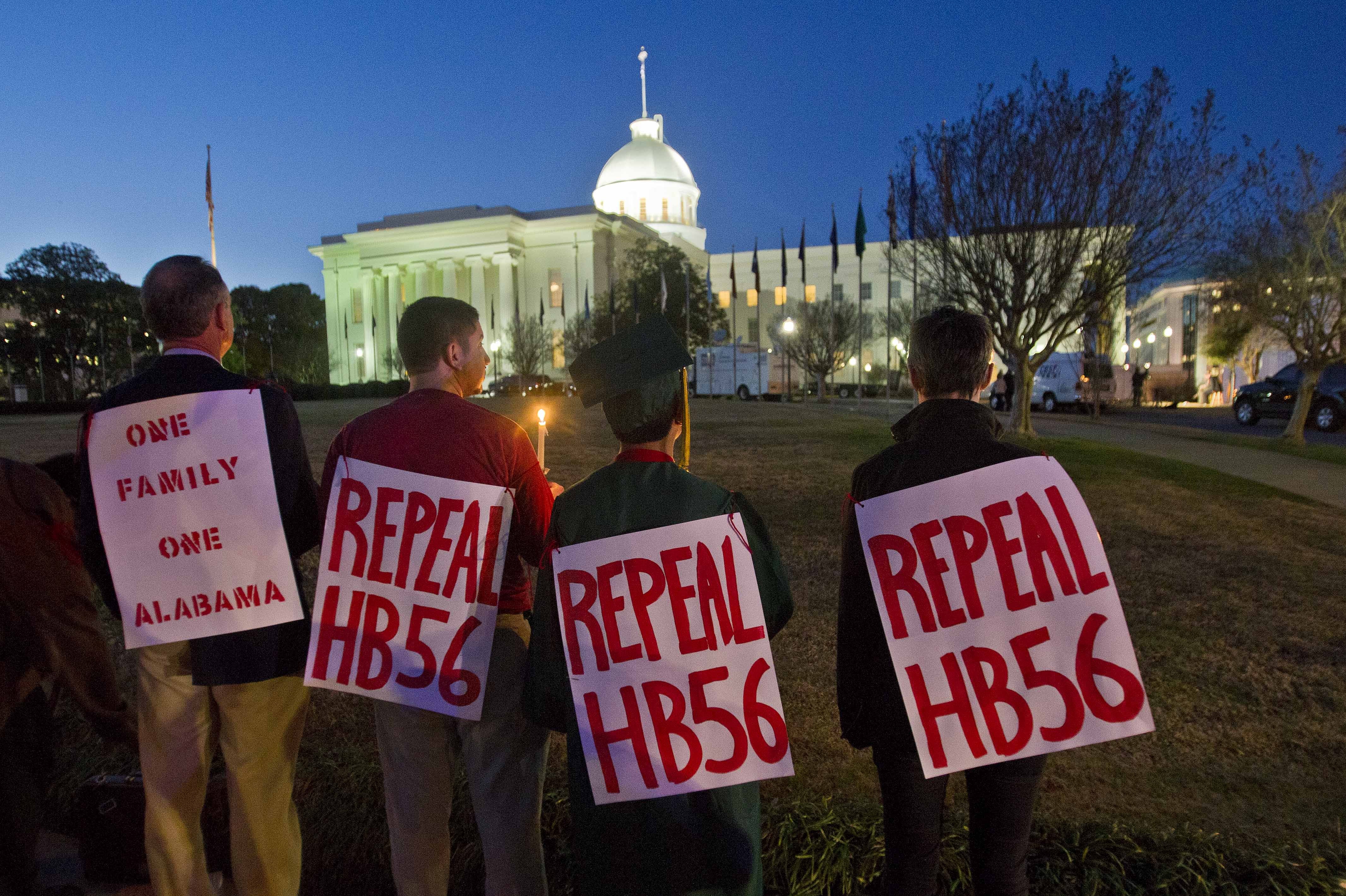Last month, we observed Domestic Violence Awareness Month (DVAM). More than 1 in 3 women and 1 in 4 men will experience rape, physical violence, and/or stalking by an intimate partner in their lifetime. DVAM represents a time for communities to come together to support survivors of domestic violence and the dedicated advocates working to keep them safe. To commemorate DVAM, we are publishing an interview with a group of staff members with DC Survivors and Advocates For Empowerment (DC SAFE), an organization that “ensures the safety and self-determination for survivors of domestic violence in the Washington, DC area through emergency services, court advocacy and system reform.”
Disclosure: Alyssa Peterson previously served as a volunteer domestic violence advocate with the organization.
Alyssa Peterson: How does economic security matter in domestic violence cases?
DC SAFE: If the abuser and the victim are living together, she has limited options. Most people of an average income wouldn’t be able to just go and put themselves up in a hotel on zero notice. If you don’t have family or friends in the city, it’s two-hundred dollars a night for a hotel. If it’s thirty degrees out, you can’t just go sleep on a park bench—if that’s even an option for anybody. If you have children, it’s even more complicated. So, having access to housing, or money for housing, is one of the biggest barriers to getting away from the abuser.
Domestic violence is said to affect people equally across sections of society regardless of income, but [that’s] not what we experience. And that’s mostly because those with income can handle domestic violence on more of a self-help basis, whereas those without income are forced to resort to [public] services and place their violence that they’re experiencing out into the open. Somebody with means can put themselves up into a hotel [or] can hire an attorney to divorce somebody and seek assets. Those without means are going to have to come to the D.C. Superior Courthouse and seek emergency housing through the city.
Alyssa: Can you all explain a little bit about your work?
DC SAFE: One of our programs is called the Court Advocacy Program (CAP). We accompany clients to court, provide them emotional support, [and] we can also work on different things that happen in court like warrants.
We can also refer survivors to different social services, including Crime Victims Compensation, which is an organization run by the government and the court systems that assists and gives some financial support to victims of crime in D.C. We [also] have several partner agencies that provide free legal services to survivors of domestic violence. We can also refer and place individuals in our shelter program, and provide them with referrals for counseling [or] forensic nurse examinations.
We assist with running our 24-hour help line, OCAP. We do things like book emergency housing, get lock changes, safety plan, [and] talk victims through both the civil and legal remedies that are available to them, often referring them to come to the intake center if they want to talk to an advocate or file for a protective order. Transportation is also something, especially [to get] to a safe place or a courthouse.
Alyssa: We’ve seen a massive shortage in affordable housing. Has that put a lot of pressure on your services?
DC SAFE: Absolutely. One of [our] top concerns when we meet with survivors is where is [the survivor] supposed to go?
If you have a client that can transfer to a different county in Maryland—that looks very different from a client who’s really stuck in the housing system in D.C. Some people were on [a] waiting list for a long time which could be as long as 10 years or more in many cases—[they] are afraid to leave their situation because they don’t want to lose that spot. They don’t want to be with the abuser, but they don’t want to lose this place that they finally got to after all these years.
Having access to housing, or money for housing, is one of the biggest barriers to getting away from the abuser.
Then, if you look at the homeless systems, the challenges there are that we work on a crisis basis and [the homeless system] may not be working on a crisis basis. [The homeless systems] may take months for them to take a client. Or there may be sobriety rules that a client can’t adhere to. If you have a program that requires that a client have documented clean time for sixty days, and we’re a crisis shelter [with maximum stay period of less than sixty days], then there’s no way that those numbers are going to match up. Even if my client is saying: “I want to be clean, I’ve been clean since the moment I got here,” that’s still over a month left before the client can even begin to think about getting into these programs.
Alyssa: Is the shelter system even a real option for survivors?
DC SAFE: It’s not ideal. Usually, the conversation is [that] if you have kids and you need an emergency shelter, and you aren’t getting in a transitional program [(another housing option for survivors)], you’re going to be leaving the district. There just aren’t options really here currently. For people who face multiple levels of trauma, going into a shelter [means] there’s little observation of what’s happening, or sharing rooms with multiple people. That may cause [survivors] to face other levels of trauma. [Survivors] may be victimized in those shelters. And then there’s the fact that [you usually] have to take your stuff with you every single day when you leave, it’s so much easier for someone to find you when you’re out on the street every day.
And ultimately, we believe that a survivor knows her situation better than anybody else in the whole world. She or he is the only one that knows what’s best, so we have some situations where they may choose option B as opposed to going to a shelter. That’s an empowered decision and we support that. It can be very difficult when you have a limited number of options. As a society, we have created a system where people really have a lack of choices.
Alyssa: Do you see a lot of survivors in a situation where an abuser has harmed their credit or economic wellbeing?
DC SAFE: Credit is a continuing issue and it’s something that we’re trying to find more resources [to address]. Even a client who has the option to transfer [to alternative low-income housing], we may see that because of back rent, they may not be able to transfer until they pay that off. The reason that they may not have paid it off is because of financial manipulation that happened with the abuser.
Which is why there’s a real need for second chance housing in the District for people who have credit issues and need to be able to prove income.
In addition, [survivors] may have wages in cash. They have wages that may be much easier to steal and manipulate. And of course, sometimes the abuser is borrowing money. He keeps borrowing. He borrows a hundred here, two hundred there, and never pays it back. And suddenly, the victim is out two-thousand dollars that she’s just been fronting to him out of her paycheck, and she can’t pay rent.
Alyssa: Are there other things that D.C. is doing specifically that help the economic security of survivors?
DC SAFE: D.C. is starting to recognize domestic violence as an extremely serious issue, as opposed to something that should stay inside the home. Every agency is continuing to take this very seriously. [D.C. has] some of the most progressive policies surrounding domestic violence.
D.C. has sick and safe leave. You can take sick time and you can also take safe time. So, you can take time off of work, utilizing your sick days to get safe if you are experiencing domestic violence.
[But] there remains a ton of work to be done. It’s great that that law is in place, but it isn’t going to do very much for a tipped worker or a low-income [worker] who has no idea what sick and safe leave is; or an employer who is going to look at a sick and safe leave request and just not [allow it]. So, there’s a lot of work to do in outreach and enforcement.
Survivors in D.C. also have the right to break their lease early with no penalties, which is fantastic. So, if a survivor just signed a lease in January, [it] may be actually one of the reasons that they may not report [domestic violence]. They may say I just signed this in January. They may say I’ll just stay here and keep the doors locked and then in a year when I feel like I can move, I can.
And then when you tell people—and this is something people don’t really know—and I was meeting with someone today and I said, “Let’s write up this template together.” It’s a letter from the survivor. It’s something from her that she gives to the landlord that explains what her rights are. She signs it and then she’s theoretically supposed to be able to move two weeks later. I think that’s very helpful.
Get Talk Poverty In Your Inbox
Alyssa: Are there other programs to support low-income survivors?
DC SAFE: The D.C. Department of Human Services does have a domestic violence work exemption for TANF [(Temporary Assistance to Needy Families)]. If [a TANF recipient] is a domestic violence survivor, not only can they be exempted from the work requirement for three months, with the option of re-opting after three months, but they can also be referred to counseling and case management.
Alyssa: I’ve read studies that the TANF exemption is underutilized. Is that the case in D.C.?
DC SAFE: Last year, they had a grand total of three exceptions granted because people just didn’t ask for it. People don’t know. Because of the vast bureaucracy of the D.C. Department of Human Services, it makes it almost impossible for a client to know how to navigate [the system]. [A survivor has] to get a referral letter from an advocate that would be faxed to a certain person [in the Department of Human Services], and then a follow up call would have to be made to that person, who would then have the client verify, and then work through the process of initiating a work exemption.
That’s the entire reason that SAFE exists because clients can’t navigate the system on their own. It’s bureaucratic, it’s byzantine… you need an MSW to know how to access all the services that you’re entitled to. And [survivors are] dealing with their court case, and finding housing and child care, and a new job, or whatever. They need to focus on doing that, and then we can focus on advocacy piece.
And when you’ve spent years being beaten down by somebody who’s trying to make you not advocate for yourself… Your abuser’s been telling you for however long that everything is your fault; that you’re a terrible person. So why do you feel comfortable advocating for yourself? You need somebody to tell you that you have a right to these services—somebody who can help you connect with the agencies and tell you that you deserve them.











